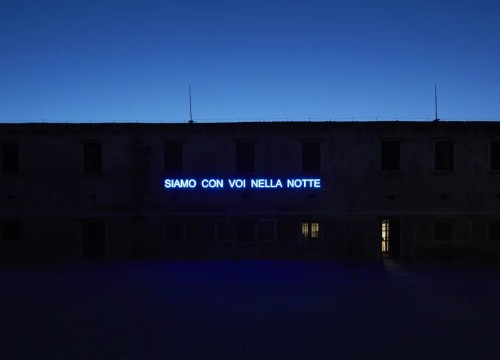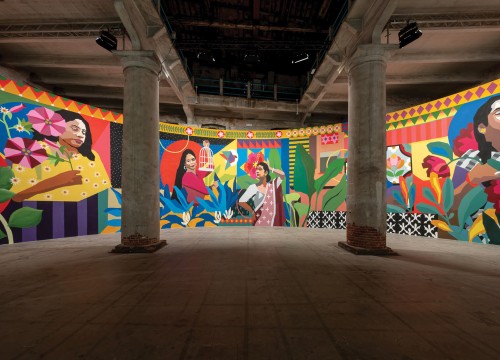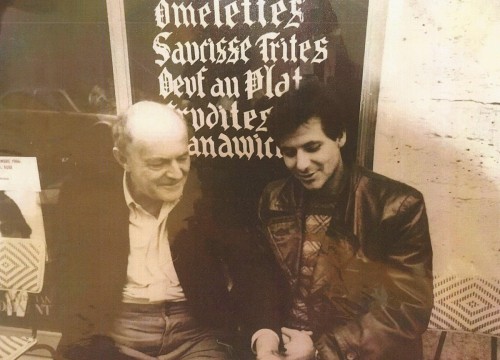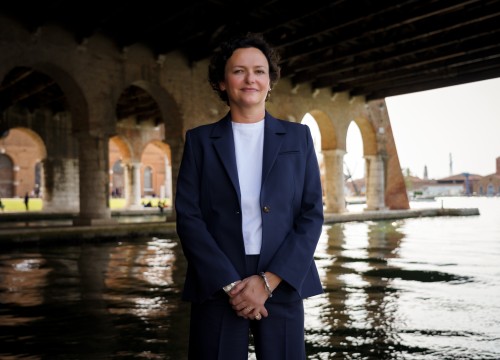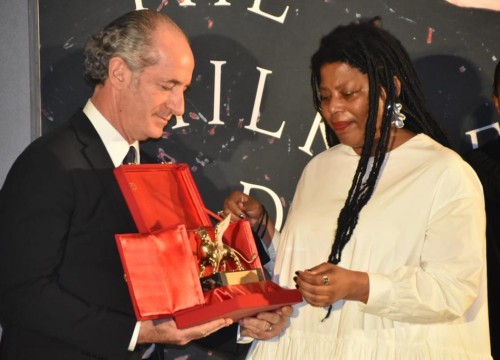In an edition unbalanced on women and African art, even the prizes are adjusted
An unconventional and courageous Biennial that gives voice to those who until now have had none, in an upside-down artistic panorama where the art of the European white man, the center and measure of everything, is replaced by the artistic practice of the rest of the world: non-Western and non-white, with a clear imbalance on the feminine. An “other” perspective, a sort of rectification of the system, open to “afroglossia” and “polyglossia” against all immobility and discrimination. The awards reflect the assumption. They have been awarded by an international jury: Adrienne Edwards (USA, curator of the Whitney Museum in New York, author of catalogs such as Blackness in Abstraction); Lorenzo Giusti (Italy, director of GAMeC in Bergamo, interested in the relationship between ecological thinking and visual arts); Julieta González (Mexico, focused on the connections between anthropology, cybernetics, architecture, ecology, environment, and visual arts); Bonaventure Soh Bejeng Ndikung (curator, writer, and lecturer from Cameroon, scholar of the relationship between the West and East, power, economics, race, and postcolonialism); Susanne Pfeffer (Germany, advisor to MoMA PS1 in New York, curator of the German pavilion at the 2017 Biennale and winner of the Golden Lion for Best National Participation).
GOLDEN LION FOR THE BEST NATIONAL PARTICIPATION
TO THE GREAT BRITAIN PAVILION AND TO SONIA BOYCE,
AN AFRO-CARIBBEAN ARTIST, WITH THE ARTWORK FEELING HER WAY
Golden Lion for Lifetime Achievement was awarded to Germany’s Katharina Fritsch, whose large sculptures, hyper- realistic and fantastical at the same time, are “perturbing apparitions” that provoke “astonishment and dizzying attraction” and to Chile’s Cecilia Vicuña, an artist, poet, filmmaker, and activist for the rights of indigenous peoples in Latin America, who transforms assemblages of debris into joints of tensions and forces where the “microscopic and the monumental seem to find a fragile balance. a precarious art, at once intimate and powerful.” Golden Lion for the best National Participation to the Great Britain Pavilion and to Sonia Boyce, an Afro-Caribbean artist, who with Feeling Her Way offers a reading of stories through sound and working in collaboration with other black women, explores the domains of syntony and dissonance.
Two special mentions to France for Dreams Have No Titles by Zineb Sedira, a French Algerian, celebrated for “the idea of building community in the diaspora”, which in her film installation, combines the personal dimension with the universal themes of the fight against discrimination and racism. The other mention goes to Uganda, for the first time present at the Biennale, with Acaye Kerunen and Collin Sekajugo, who, through practices linked to sewing and weaving with natural fibers and a combination of recycled elements, propose “sustainability as a practice and not only as a policy or mere abstraction”. Golden Lion for the best participant at the International Exhibition goes to Simone Leigh for Milk of Dreams. The Jamaican American artist protagonist of the USA pavilion in the gardens, whose “ rigorously researched, skillful, powerfully suggestive , monumental sculpture at the entrance to the Arsenale” evokes the ancestral figure of the woman- container-home-sanctuary: tribal, solid, resistant, without eyes, with her gaze turned inward. Silver Lion to Ali Cherri, a Lebanese artist, who in the video installation Of Men, Gods and Mud combines history and myth, giving life to monstrous creatures, metaphors of devastation, and to “narratives that depart from the logic of progress and reason”.
GOLDEN LION FOR LIFETIME ACHIEVEMENT TO KATHARINA FRITSCH FOR
HER LARGE, HYPER-REALISTIC AND FANTASTICAL AT THE SAME TIME SCULPTURES
The Jury also decided to award two additional special mentions: one to Lynn Hershman Leeson (USA), whose videos and mirror prints explore the relationship between human beings, artificial intelligence, cybernetics, genetic engineering, and question the influence of technology in our daily lives. The other special mention goes to Shuvinai Ashoona, an artist from the Arctic, who “reveals in her drawings and paintings the depth of the indigenous Inuk cosmogonies. An existence in which the species are interdependent on each other, without the intervention of colonialism or other human powers.”






